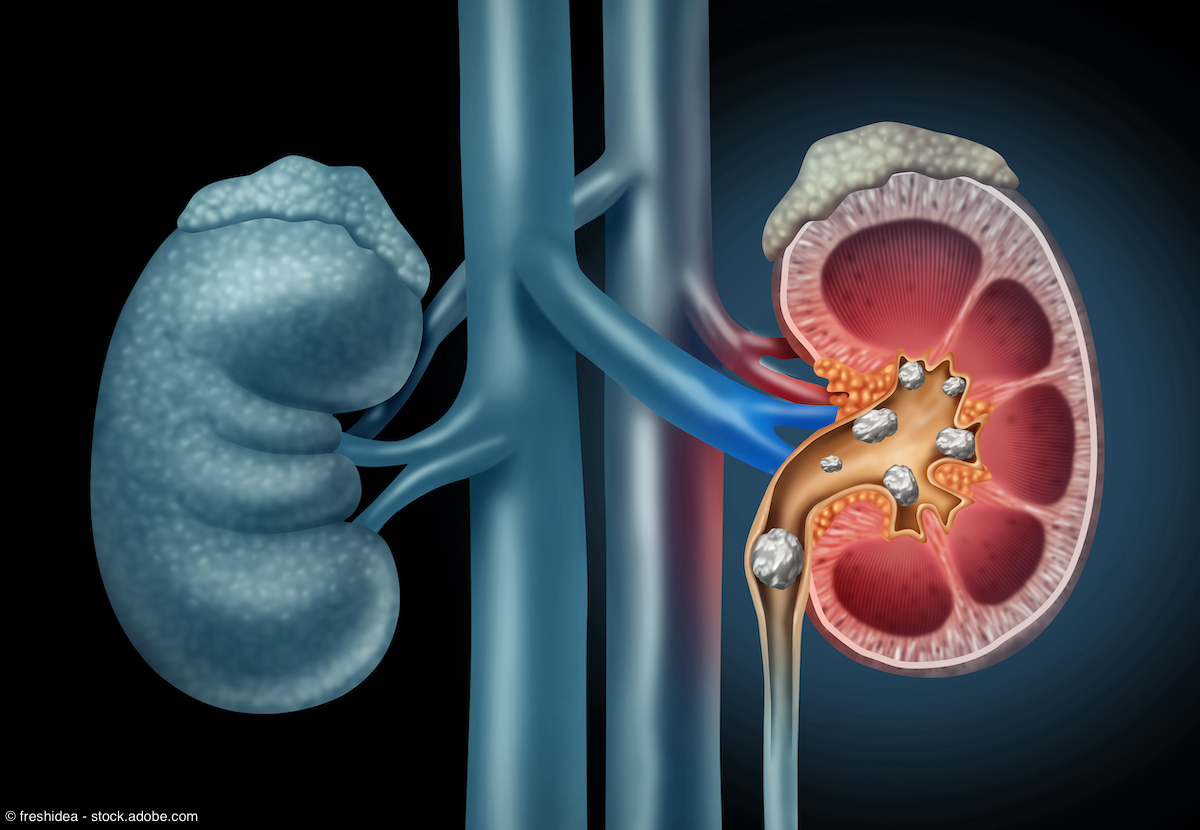Article
ED visits and hospital admissions continue to rise up to 120 days after stone procedures
Author(s):
The highest cumulative 120-day rates of ED visits and HA were observed in patients who underwent percutaneous nephrolithotomy procedures.
Emergency department (ED) visits and hospital admissions (HA) continued to rise up to 120 days following common stone procedures, according to recent findings presented in Urology.1
All-cause ED visits and HA were largely driven by GU-related issues following the procedure.

The retrospective study analyzed ED visits and HA after common urological stone procedures such as ureteroscopy (URS), shock wave lithotripsy (SWL) and percutaneous nephrolithotomy (PCL). Currently, much of the literature focuses on 30-day readmission rates, with little data on rates beyond that time frame. This exploratory study looked at data at 30, 60, 90, and 120 days following inpatient and outpatient stone procedures.
The investigators identified 166,287 patients using claims data from the IBM MarketScan Commercial and Medicare Supplement databases. Of all total procedures, 14,349 patient procedures occurred in the inpatient setting and 151,938 occurred in the outpatient setting. The study cohort consisted of adult patients who had received a urologic stone diagnosis, had no history of a stone procedure in the prior 12 months, and underwent a stone procedure between 2012 and 2017.
Data showed increasing cumulative incidence of ED visits and HA up to 120 days post-procedure, with readmissions strongly correlated with genitourinary (GU)-related issues. Cumulative 120-day ED rates following a stone procedure were 18.8% for URS, 19.2% for SWL, and 23.6% for PCL.
All-cause ED visits and HA were largely driven by GU-related issues following the procedure. GU-related ED visits accounted for 89% of all-cause visits at 30 days, and 81% of all-cause visits at 120 days. GU-related issues also accounted for almost 100% of HA at 30 days and 93% of HA at 120 days.
The highest cumulative 120-day rates of ED visits and HA were observed in patients who underwent PCL procedures. All-cause 30-day ED visits following PCL were 10% for outpatient procedures and 12% for inpatient procedures. At 120 days, these rates increased to 17% for outpatient-indexed procedures and 23% for inpatient procedures.
Rates of all-cause 30-day HA following PCL were 10% for both outpatient and inpatient procedures. At 120 days, rates were 14% for outpatient PCL procedures and 23% for inpatient procedures. More than half of cumulative all-cause HA following PCL procedures were readmitted after 30 days, with 10% of patients being readmitted before 30 days and 13% being readmitted after 30 days.
The lowest overall 120-day HA rate was observed in patients who underwent SWL, with all-cause 120-day HA being 6% for outpatient procedures and 10% for inpatient procedures. At 30 days, HA following SWL procedures was 3% for outpatient procedures and 5% for inpatient procedures.
The authors concluded that future studies analyzing readmissions past the standard 30-day cutoff could more precisely quantify the patient burden of ED visits and HA related directly to the index stone procedure.
References
1. Wahlstedt E, Kelly T, Jung M, Harris A. 120-Day ED visits and readmission rates following common stone procedures. Urology. Published online March 16, 2023. Accessed March 17, 2023. doi:10.1016/j.urology.2023.02.041

















